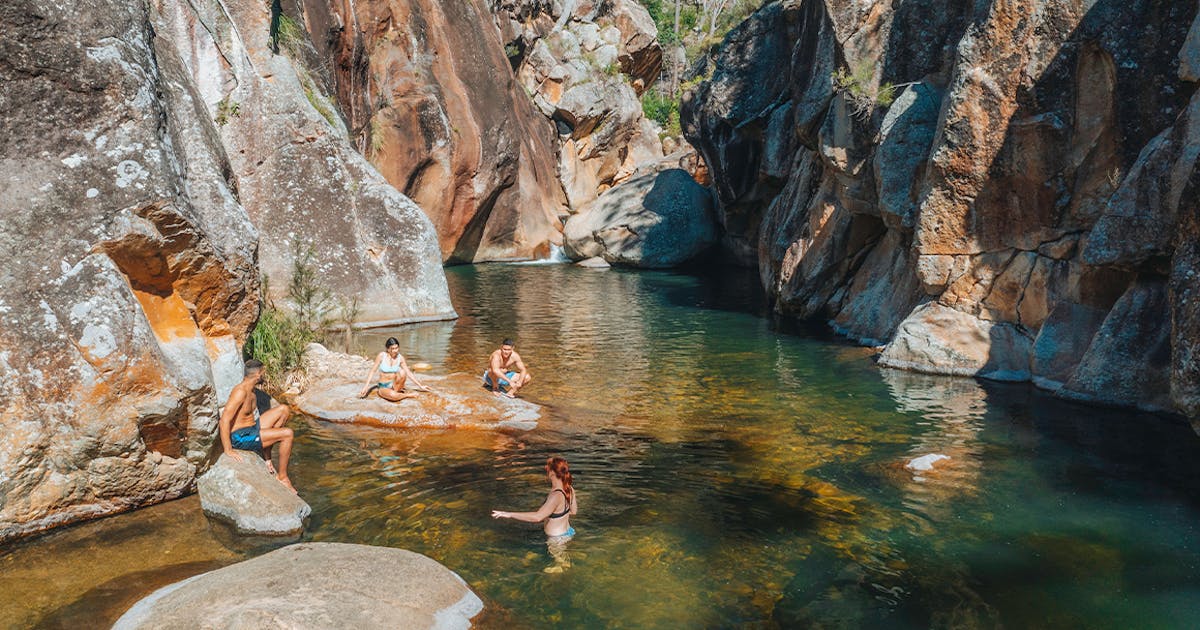River Swimming: How to Stay Safe and Have Fun in the Wild Waters
Are you tired of the same old swimming pool routine? Looking for a new adventure that will get your heart racing? Look no further than swimming in rivers! While it may seem like a simple activity, swimming in rivers can be a thrilling and dangerous experience that requires preparation, caution, and respect for the natural world.
Swimming in rivers offers a unique and exciting way to connect with nature. Unlike swimming pools, rivers are dynamic and constantly changing environments. The water can be deep or shallow, calm or turbulent, clear or murky, depending on the season, weather, and location. Rivers are also home to a diverse range of aquatic life, such as fish, turtles, frogs, and insects, that you can observe up close while swimming.
However, swimming in rivers also poses significant risks and challenges that you need to be aware of before you dive in. The first and most obvious risk is drowning. Rivers can have strong currents, hidden rocks, and sudden drop-offs that can easily overwhelm even the strongest swimmers. It's crucial to assess the river conditions and your own swimming skills before entering the water. Never swim alone or under the influence of alcohol or drugs.
Another danger of swimming in rivers is the risk of waterborne illnesses and infections. Rivers can contain harmful bacteria, viruses, and parasites that can cause gastrointestinal, respiratory, or skin problems. To minimize the risk, avoid swimming in polluted or stagnant rivers, and always shower or wash yourself thoroughly after swimming. If you have an open wound or a weakened immune system, consult your doctor before swimming in rivers.
In addition to physical risks, swimming in rivers also poses ethical and environmental challenges. Rivers are vital ecosystems that support a variety of plant and animal species. Swimming in rivers can disturb or harm these species, especially if you use sunscreen, insect repellent, or other chemicals that can pollute the water. To minimize your impact, choose designated swimming areas or natural pools that are less likely to disturb the wildlife. Don't remove or damage any plants, rocks, or other natural features, and take your trash with you when you leave.
Despite these challenges, swimming in rivers can be an incredibly rewarding and memorable experience. Here are some tips and tricks to help you make the most of your river swimming adventure:
Research the river before you go: Check the water quality, the weather forecast, the current conditions, and the accessibility of the river. Look for any potential hazards or regulations that may affect your swimming plans. Choose a river that suits your swimming level and preferences.
Pack the right gear: Bring a swimsuit, a towel, water shoes, a hat, sunglasses, and sunscreen. Avoid using any chemicals or plastic that can harm the river or its inhabitants. If you plan to swim for a long time or in cold water, consider bringing a wetsuit or a dry suit.
Choose a safe and comfortable spot: Look for a calm and shallow area where you can easily enter and exit the water. Avoid swimming near dams, bridges, or rapids that can increase the risk of accidents. Stay away from any wildlife or plants that may pose a threat or a disturbance.
Be mindful and respectful: Before you swim, take a moment to appreciate the natural beauty of the river and its surroundings. Listen to the sounds of the water, the birds, and the wind. Respect the privacy and space of other swimmers or visitors. Follow any rules or guidelines posted by the authorities or the locals.
Enjoy the experience: Once you're in the water, let yourself be carried by the flow and the rhythm of the river. Swim, float, or dive as you feel comfortable and safe. Explore the underwater world and the hidden treasures of the river, such as rocks, pebbles, plants, and creatures. Take breaks on the shore to rest, hydrate, and soak up the sun. Bring a camera or a sketchbook to capture your memories and impressions.
Stay alert and prepared: Even if you're having fun, don't let your guard down. Watch out for any changes in the water, such as currents, waves, or debris. Stay away from any sudden drops or deep spots that can catch you off guard. If you feel tired, cold, or uncomfortable, exit the water and warm up. Bring a first-aid kit and a phone in case of emergency.
Share your experience: After you've finished your river swim, share your experience with others. Tell your friends, family, or social media followers about the beauty, the challenges, and the lessons of swimming in rivers. Encourage them to try it themselves, but also to be respectful and responsible swimmers.
Swimming in rivers can be a thrilling and enriching activity that allows you to connect with nature and challenge yourself. However, it also requires caution, preparation, and respect for the environment and its inhabitants. By following these tips and guidelines, you can have a safe and memorable river swimming adventure that will inspire you for a long time. So, dive into the adventure and explore the wonders of the rivers!
Labels: Interesting, travel


0 Comments:
Post a Comment
Subscribe to Post Comments [Atom]
<< Home